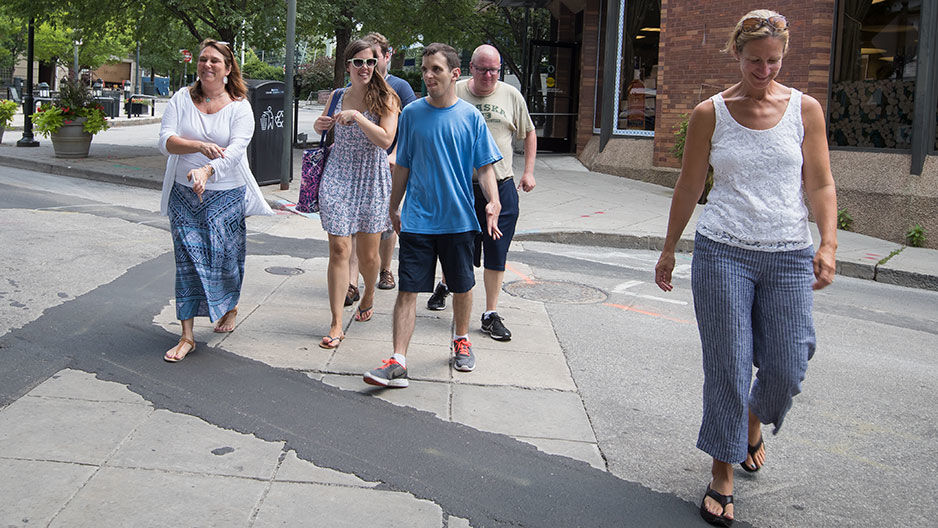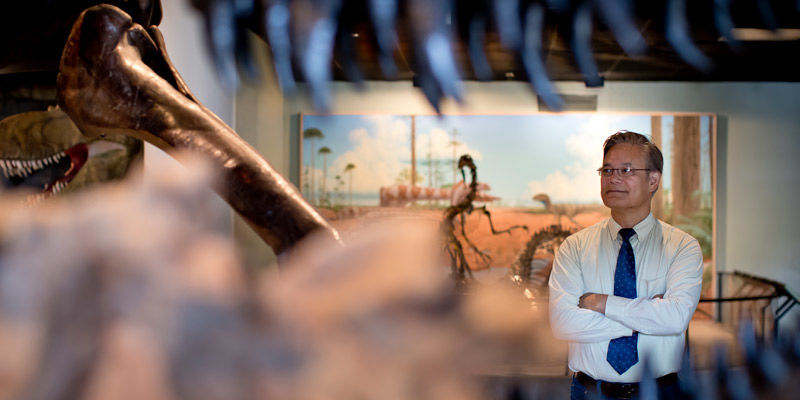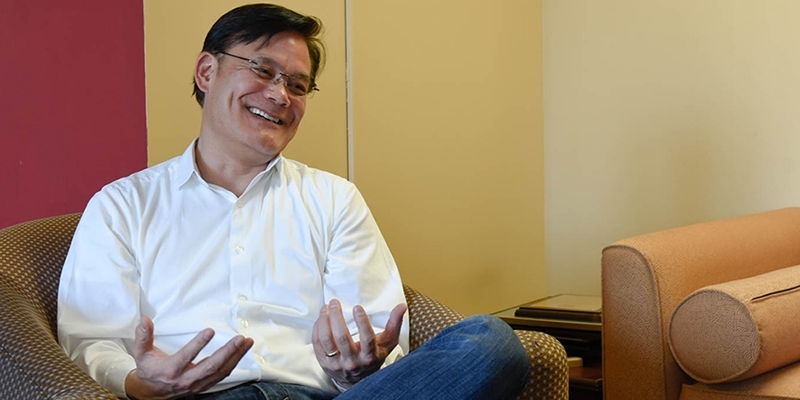From peer to there: Connecting across subway lines
Professor Beth Pfeiffer empowers individuals on the autism spectrum to aid others with disabilities in conquering public transportation.

Something as simple as a subway ride can be—for people on the autism spectrum—a nearly insurmountable obstacle, full of frightening sounds and other supremely stressful experiences.
Work, friendships, personal interests; all can suffer once the support of the school system has been stripped away and friends and family are similarly occupied with their own busy lives.
But what if it didn’t have to be this way? What if a solution existed to ease the strain of public transit for these folks, at the same time as it engages them in aiding others?
Associate Professor Beth Pfeiffer believes she may have an answer.
A ticket to ride
An MS in occupational therapy from Temple eventually led Pfeiffer to a doctorate in occupational therapy, which in turn led to her current position as an associate professor in the Department of Health and Rehabilitation Sciences’ occupational therapy program.
Perhaps just as importantly, in her clinical research, Pfeiffer studies person-environmental interactions in individuals with autism spectrum and mental health disorders or intellectual development disabilities. Pfeiffer is working to bridge the gap between her research interests and a desire to create real, impactful change.
Or, what she might dub, in her own quietly excited way, “measurable outcomes.”
“What I found was that there was just nothing for them as they transitioned out of the school system and these supportive services,” Pfeiffer said, pointing to the population with autism spectrum disorders which she sees as most in-need, and, not coincidentally, with which she works closest.
“They transition [to adulthood], and parents are talking about how there’s no place for them to go, they’re struggling with work, they’re struggling with those kind of life skills,” Pfeiffer continued. “I started to look at work and employment with that population, and … I found that the biggest barrier was transportation.”
To transit and beyond
Inspired by this discovery, Pfeiffer followed this course to her current project, “Enhancing Community Participation and Utilization of Employment and Health Services through Peer-Mediated and Occupational Therapy Transportation Interventions,” a program aimed at helping individuals on the autism spectrum familiarize themselves with the ins and outs of public transportation. It’s a truly personal experience, born out of both Pfeiffer’s ingenuity, and the abilities—not just the deficits—of the individuals with whom she works.
“We try to use strength-based approaches as much as possible,” Pfeiffer explained. “And that’s, ‘Hey, what do you like and what are you good at?’ And then, ‘How can we use that to help you do well in public transportation?’”
Some of the broadest barriers to success for this population are environmental, whether physical or sensory—both unavoidable aspects of public transportation, as anyone who’s watched an express train fly past the platform can attest. There are also cognitive barriers, possibly a result of confusing signage or unexpected route changes.
But that’s not all.
“Sometimes, and what we found with employment, the biggest barriers are the social environment. It might be, ‘I don’t know how to navigate that social environment,’ or it might be other people in the environment,” Pfeiffer said.
Peer-to-peer partners
This is where Pfeiffer’s program goes a step further. Utilizing curriculum designed by the Kennedy Center as a jumping-off point, Pfeiffer has begun to explore the benefits of not just helping these individuals handle the trials of public transportation, but then training them to use their skills to help others on the autism spectrum.
“We started to look at this component of transportation, and then, as we were doing that … we realized that some of these important effective interventions were kind of these peers that understood lived experiences of the individual,” she said.
The result? A further transformation—this time for the program itself—moving to fully embrace a peer-to-peer model that supports the individuals who must understand what this population needs.
The ultimate goal, as Pfeiffer sees it, is freedom. Independence. The sense, not just for these individuals, but for their families as well, that whatever unforeseen circumstance might arise during their daily travels, they’ll be more than equipped to handle it.
To that end, determining a candidate’s strengths and working with them to identify and refine what makes them successful are key: It might not matter if their strengths lie in one world when they’re being asked to work in another.
These strengths then act as building blocks, allowing the individual to develop confidence in themselves and their abilities and, hopefully, moving them toward even more tangible achievements, like traveling to work alone or overcoming other potential pitfalls.
“We really want to provide contextually relevant interventions and assessments,” she said.
Where they’re going
The peer-to-peer aspect of the program is still relatively new, so Pfeiffer and her team of researchers continue to tweak the process, focusing on certain individuals who’ve done well in the program and determining what could be done to improve the overall outcomes.
Just recently, the program was able to take a monumental step: Two adults with autism were hired to be interventionists and implement a peer-support model.
The program also maintains close ties to SEPTA, which offers waiver services, in conjunction with running its own disability training program. Although the program is in progress, it is already showing promising outcomes—and Pfeiffer has a clear vision for its future.
“At this point, our real focus is we adapted that curriculum and we’ve developed a peer training,” she said. “We train our peer support specialists, our staff, in being able to implement the curriculum, but also in implementing these peer-support components.”
Reciprocity, understanding and shared experiences are key components in the peer-support model. What happens when you miss a bus or a train, and how do you best respond to the situation? Ultimately, to Pfeiffer, solving issues like these is a simple answer to what can be a complicated question for the people the program is helping.
“It’s very reciprocal,” she said. “It’s about encouragement.”
—Cal Setar

